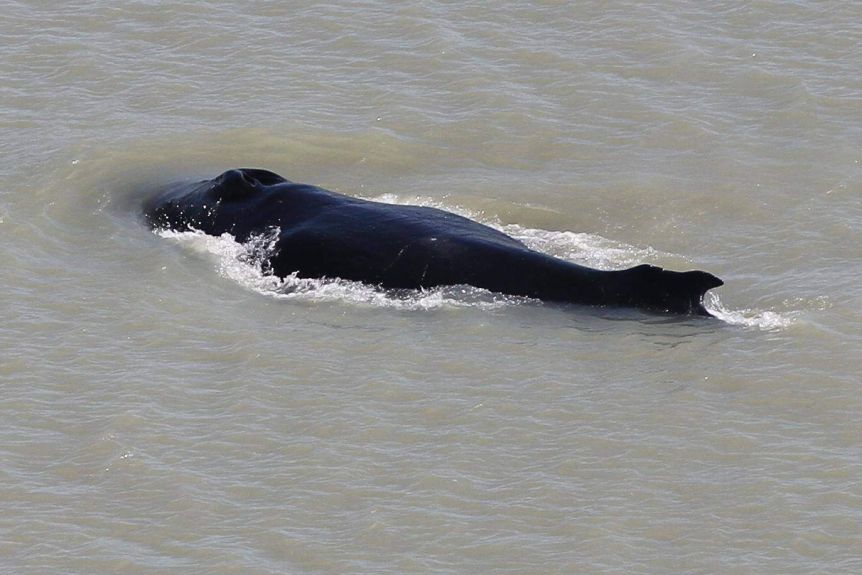Lost humpback whale abandoned by friends in croc-infested river in Australia
The whale swam nearly 20 miles upriver before scientists caught up to it. It's still going the wrong way.

A humpback whale is swimming the wrong way up an alligator-filled river in Australia's Northern Territory, according to media reports. The lost whale is traveling further inland than any whale has ever been seen on the continent, government experts said on Monday (Sept. 14).
"It's something that's never been recorded before — not just in the Northern Territory, but in Australia," Carol Palmer, a marine ecosystems scientist for the Northern Territory Government, told the Australian Broadcasting Company (ABC). "It's really, really unusual."
The stranded whale is one of three humpbacks (Megaptera novaeangliae) spotted last week swimming in the not-at-all-ominously-named East Alligator River, which connects Kakadu National Park in northern Australia with the nearby sea. Saltwater crocodiles inhabit the river's murky, brown waters as far as 100 miles (160 kilometers) inland, CNN reported, where they wait to ambush a variety of prey, including the occasional human.
Related: Humpback whale charges swimmers in Australia, sends two to hospital
As of Monday, two of the whales appear to have made a U-turn back to sea, while one remains swimming roughly 19 miles (30 km) upstream, seemingly lost. The threat of a croc attack seems slim for now, Palmer said, given the whale's massive size (it measures an estimated 52 feet, or 16 meters long) — however, if the whale becomes stranded in shallow waters, it could become an easy target.
To avoid that, Palmer and other experts are considering some acoustic strategies to force the whale to head back downriver, including blasting the river with underwater noise pollution or playing pre-recorded killer whale (Orcinus orca) calls upstream to try and coax the humpback into reversing course. In the meantime, the government has set up an "exclusion zone" along the first 19 miles of the river to keep boaters out of the whale's way.
How did the humpback trio end up so far inland in the first place? It's likely they took a wrong turn on their way toward Antarctica, Palmer said. Every summer (which is about to kick off in the Southern Hemisphere), humpbacks migrate from their Australian breeding grounds to their Antarctic feeding grounds. On their way south, these whales could have swum accidentally into an estuary that fed them deeper into the river system. The river's murky brown waters don't help either, as they are hard to navigate by sight.
Get the world’s most fascinating discoveries delivered straight to your inbox.
A recent boom in the local humpback population also means there are simply more whales around to get lost. (In 2019, for instance, a young humpback whale got sick and disoriented before winding up in the Amazon Jungle, Live Science previously reported.)
"We have seen a spike in their population in recent years," Palmer said. "There are probably upwards of 40,000 whales in the west coast population and 35,000 along the east coast."
Originally published on Live Science.

Brandon is the space/physics editor at Live Science. His writing has appeared in The Washington Post, Reader's Digest, CBS.com, the Richard Dawkins Foundation website and other outlets. He holds a bachelor's degree in creative writing from the University of Arizona, with minors in journalism and media arts. He enjoys writing most about space, geoscience and the mysteries of the universe.
